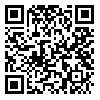Volume 1, Issue 4 (12-2014)
jbrms 2014, 1(4): 1-6 |
Back to browse issues page
Dept of Physiology, Faculty of Medicine, Ilam University of Medical Sciences, Ilam, Iran , safoura.mohamadpour@yahoo.com
Abstract: (5703 Views)
Introduction: Sugar cane is a giant plant of grain products. Regarding the benefits of the use of medications with herbal origin, in the present study the impact of sugar cane extract on atherosclerosis and LDL-c and HDL-c in the serum of hypercholesterolemic rabbits was studied. Materials and methods: 24 adult male New Zealand rabbits race with an average weight of 2 kg were classified into four groups: the control group had a normal diet, Sham group and the 1 , 2 experimental group were cholesteroled with 2% high cholesterol regime and received drug solvent, sugar cane extract with 3.7 and 7.4 mg/kg doses as an oral treatment per day, respectively . After eight weeks of treatment, Blood were collected and subjected for measuring of LDL-C and HDL-c. For histological studies, Aorta was removed and was fixed in formalin %10. SPSS with ANOVA was applied for data analysis. Results: The results demonstrated treatment via sugar cane extract with 3.7 and 7.4 mg/kg per day, significant reduction in LDL-c and significant increase in HDL-c, in compare with Sham group, was occurred. In addition, histological examination showed that treatment by 3.7 and 7.4 mg/kg per day of Sugar cane extract (the experimental groups 1, 2, respectively), prevented atheroma plaques. Conclusion: Sugar cane extract may be effective in reducing the amount of LDL-c and increasing HDL-c and prevents the formation of atheroma plaques.
Type of Study: Research |
Subject:
Physiology
Received: 2015/02/18 | Accepted: 2015/02/20 | Published: 2015/02/22
Received: 2015/02/18 | Accepted: 2015/02/20 | Published: 2015/02/22
| Rights and permissions | |
 |
This work is licensed under a Creative Commons Attribution-NonCommercial 4.0 International License. |


